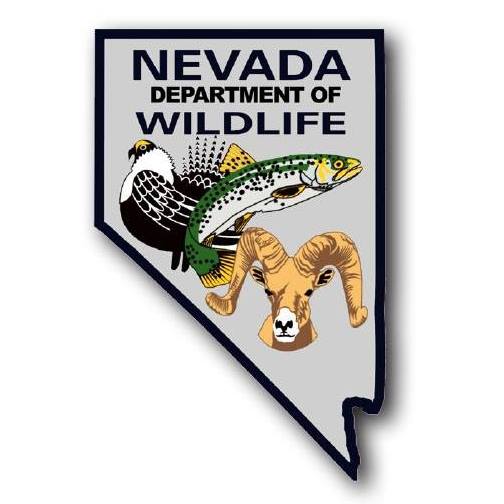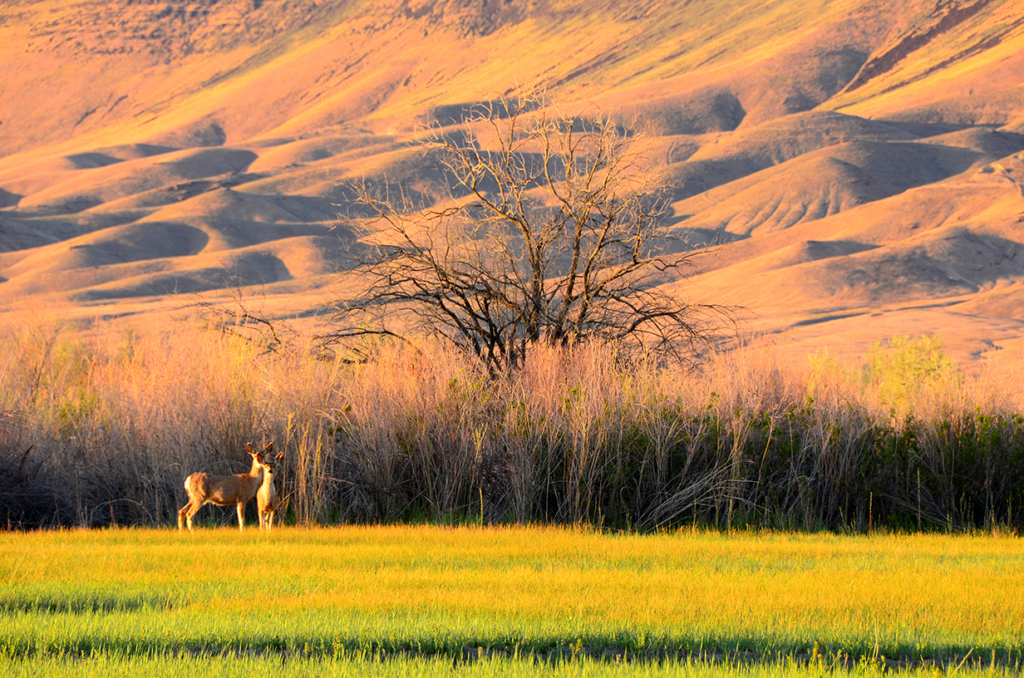 The Nevada Department of Wildlife manages 14 Wildlife Management Areas (WMA) across the state for the purpose of conserving and enhancing habitat for many of Nevada’s wildlife species and public recreation opportunities. In total, the Department manages approximately 167,000 acres as WMA’s. Typical management activities on a WMA includes irrigating, weed abatement, fencing, farming, and recreation management (hunting, fishing), similar to many of those activities undertaken by a typical Nevada ranch. Many of these areas are also grazed or farmed through leases to maintain and improve the wildlife habitat values they were originally purchased for. Not only do the WMA’s provide wildlife with valuable habitat and the public with recreation opportunities, but are also good for local communities, economy, and for farmers and ranchers. This is part one of a two-part series highlighting the Argenta WMA.
The Nevada Department of Wildlife manages 14 Wildlife Management Areas (WMA) across the state for the purpose of conserving and enhancing habitat for many of Nevada’s wildlife species and public recreation opportunities. In total, the Department manages approximately 167,000 acres as WMA’s. Typical management activities on a WMA includes irrigating, weed abatement, fencing, farming, and recreation management (hunting, fishing), similar to many of those activities undertaken by a typical Nevada ranch. Many of these areas are also grazed or farmed through leases to maintain and improve the wildlife habitat values they were originally purchased for. Not only do the WMA’s provide wildlife with valuable habitat and the public with recreation opportunities, but are also good for local communities, economy, and for farmers and ranchers. This is part one of a two-part series highlighting the Argenta WMA.
The Argenta Wildlife Management Area, known to many as the “Licking Ranch”, can be found outside of Battle Mountain, NV. The Nevada Department of Wildlife purchased the ranch in 2022 after being approached by the owner who wanted to sell the ranch to an organization that prioritized conservation values. The Department had long recognized the importance of the property for wildlife and its uniqueness in hosting the confluence of the Humboldt River, the Reese River and Rock Creek on the property. This area provides habitat for tens of thousands of migrating waterfowl and shorebirds which utilize the large river meadows as a stopover along their Pacific Flyway migration. When approached, the Department recognized the opportunity to conserve valuable wildlife habitat, while maintaining agriculture as a key management strategy.
This ranch has a deep Nevada history with Anna Pate and William Licking establishing the property in the 1880’s and since has been owned and managed by several prominent ranching families, including the Venturacci family from Fallon, as well as the Tomera family from Battle Mountain. It was these families and their ranching practices that paved the way for this ranch to remain prime wildlife habitat throughout the years and all the changes on the Humboldt River system. The ranch consists of approximately 1,550 acres of intact river bottoms and large native hay meadows that have been hayed since the 1880’s and depending on the water year, can produce up to a couple thousand tons of meadow hay that in turn is fed back to the lessee’s livestock during the winter months. These large meadows are extremely important for wildlife and as such, the Department fully recognizes the importance of keeping them intact with annual weed maintenance, haying and actively and thoughtfully managing willows to keep them from encroaching or overtaking these pastures.
The Department fully recognizes these land management practices as being crucial to the overall maintenance and enhancement of habitat for wildlife on the property. After the purchase in 2022, the Department immediately put out a competitive bid for the farming and grazing lease. Since this contract has been in place with the lessee and during the last two years, over 2,200 tons of hay has been put up by the lessee which in turn is fed back to his livestock on the property. The Department and lessee work cooperatively on ranch management actions such as fencing, irrigation, improvements, etc. to provide practices that holistically benefit the ground and ultimately the livestock and wildlife that use it.
Since the Department has taken ownership of the ranch, major upgrades have occurred on the property including upgrading all remaining stock wells with solar applications; aerial and ground herbicide treatments; aerial and ground wet and dry seeding projects using several species of clovers and millets; strategic willow abatement and black willow re-establishment; water control structure installations, bridge and dam upgrades and maintenance; fence repair and entrance gate installations; hay corral installations; road and facilities maintenance; as well as an installation of a park-like area containing sod, trees, picnic benches and a surrounding pipe rail fence for the public to enjoy. The only irrigation well on the property was recently refurbished with new casings, motors and electrical components. This well will allow the Department to irrigate and plant up to 20 acres of pasture into a desirable wildlife food plot in concert with a holistic livestock grazing management strategy across the ranch. The Department also contracts with USDA-APHIS Wildlife Services to strategically trap predators at the WMA to meet objectives.
The Argenta WMA is currently open to the public for all to enjoy with some regulations in place that aim to protect the intrinsic and historic values of the ranch and keep the public safe. The majority of the public users just want a place to go for a walk to connect with wildlife and nature. This connection for the public is very important in that both consumptive and non-consumptive users see can see first-hand a harmonious relationship of a private lessee and government agency working together on a property where livestock, agriculture, and wildlife are thriving on a State Wildlife Management Area.

The Department would like to take this opportunity to express our deepest sympathy and condolences to the Ancho family. Kathy Ancho passed away in 2024, and her passion, dedication, and never-ending positive attitude for the Argenta WMA will be truly missed. Kathy spent a lot of her life on the Licking Ranch with the Venturacci and Tomera families and her support as a Lander County Commissioner was invaluable for the success story that is the Argenta WMA.
by Jeremy Lutz, Caleb McAdoo, and Mark Freese
